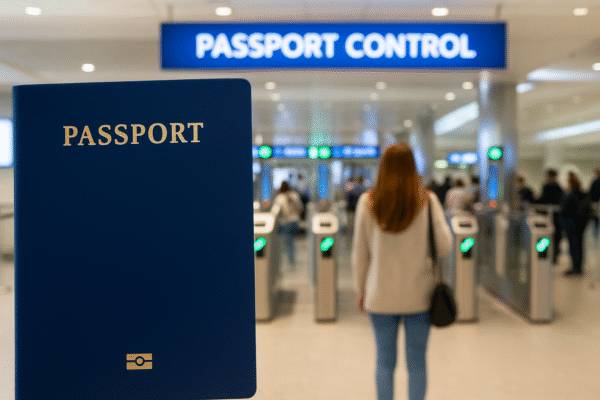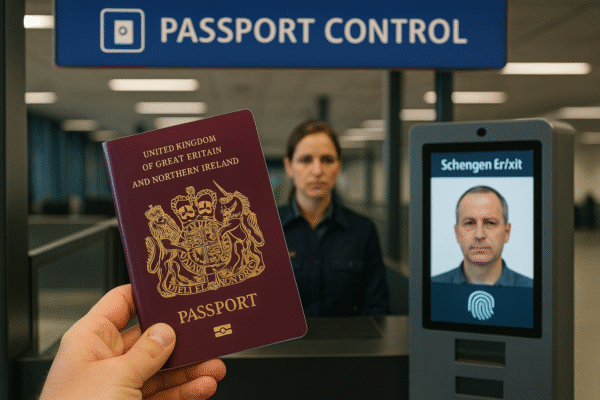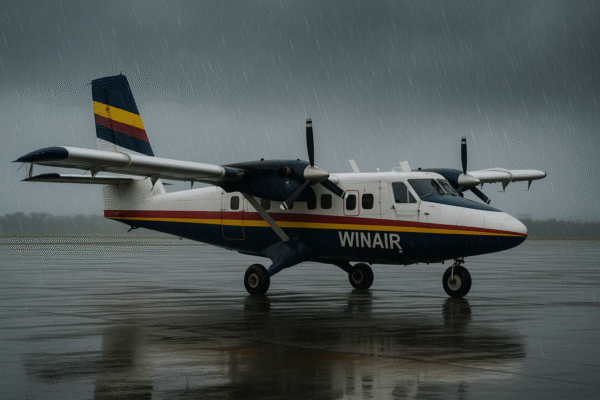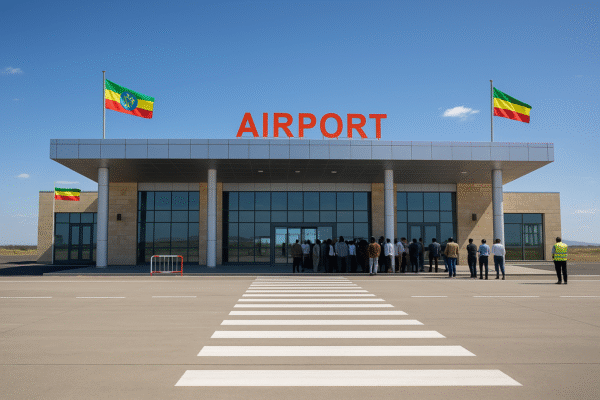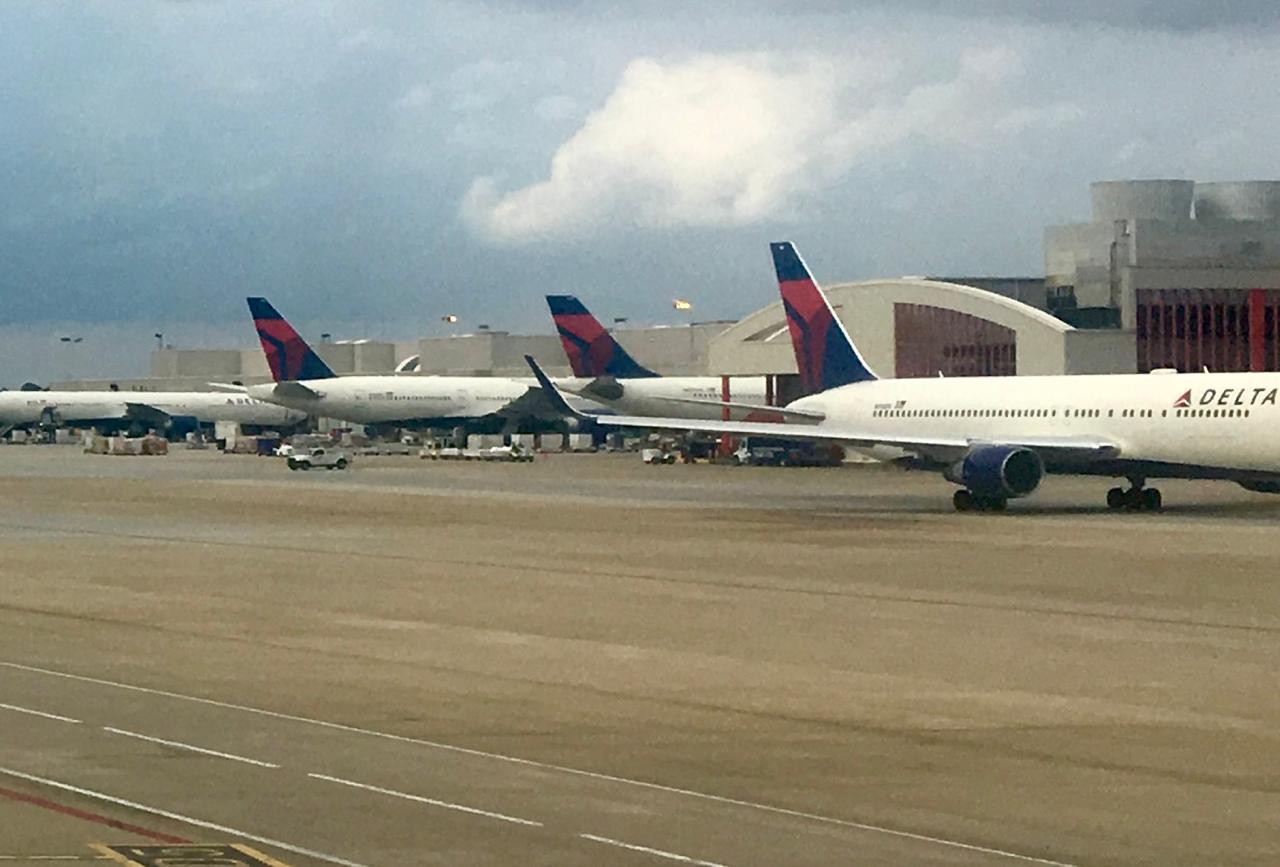An unexpected engine failure mid-flight forced Delta Air Lines Flight 127, operating an Airbus A330 with 282 passengers and 13 crew on board, to make an emergency landing at Lajes Airport (TER) on Terceira Island in the Azores, delaying the journey from Madrid to New York (JFK) by over 31 hours.
The incident occurred on Sunday, when the aircraft experienced mechanical issues with one of its engines while flying over the Atlantic. Following established safety protocols, the flight crew made a precautionary diversion to the nearest suitable airport, ensuring the safety of everyone on board.
Emergency Diversion to Lajes: A Safety-First Response
Lajes Airport, a dual-use civilian and military airfield located in the Portuguese Azores, is strategically positioned between Europe and North America and frequently serves as an emergency stop for transatlantic flights.
Upon experiencing engine failure, Delta’s experienced flight crew acted swiftly and responsibly by diverting the aircraft. Though the Airbus A330 is capable of operating with one engine under ETOPS (Extended-range Twin-engine Operational Performance Standards), the diversion was made to avoid any unnecessary risk.
The aircraft landed safely at Lajes, where passengers disembarked and awaited further updates. While the emergency landing was executed without incident, the remoteness of the location presented logistical challenges in accommodating and rerouting passengers.
Passengers Face a 31-Hour Delay on Remote Island
Passengers were left grounded on Terceira Island for over 31 hours, with many describing the experience as both disorienting and frustrating. The island’s limited airport infrastructure and scarce accommodations meant that it was difficult to manage the needs of nearly 300 stranded travelers.
Social media posts from passengers detailed their confusion and discomfort, citing a lack of clear communication, limited food options, and minimal overnight arrangements in an unfamiliar destination. Several passengers described the experience as a “tropical layover they never expected.”
Delta responded by attempting to secure hotel rooms, provide meals, and arrange ground transport for affected travelers. Despite the challenges, the airline issued updates on the aircraft’s repair status and worked with local authorities to resume operations as soon as possible.
Impact on Travel Plans and Passenger Connections
The delay led to widespread disruption for travelers scheduled to arrive at JFK Airport, with many missing onward connecting flights, meetings, or personal events. Some passengers faced nearly two days of delay before they could reach their final destinations.
Still, several passengers acknowledged the necessity of the diversion and the airline’s focus on safety. “We’d rather be delayed than endangered,” one traveler posted online. Delta issued travel vouchers and compensation to affected passengers to address the inconvenience.
After repairs were completed and safety checks were conducted, Delta Flight 127 resumed its journey and landed in New York late Tuesday, closing a saga that will remain a unique story for all on board.
Delta’s Official Statement and Safety Protocols
Following the incident, Delta Air Lines issued a formal statement reaffirming its commitment to safety. “The safety of our customers and crew is always Delta’s top priority,” said a spokesperson. “We appreciate the professionalism of our flight crew and the patience of our passengers during this unforeseen situation.”
The airline is conducting a full investigation into the engine failure, working closely with its maintenance team and the aircraft’s manufacturer, Airbus, to identify the root cause. The findings will contribute to refining maintenance and safety protocols for long-haul operations.
Aviation Safety and Long-Haul Risk Management
While rare, mid-flight mechanical issues like this highlight the importance of redundant safety systems, pilot training, and contingency planning in global aviation. Aircraft operating transatlantic flights must adhere to strict ETOPS guidelines, which ensure they can reach a diversion airport within 60 to 180 minutes in the event of a failure.
Delta’s decision to divert to Lajes is a textbook case of adhering to international aviation standards and prioritizing passenger safety over convenience. It also underscores the unique challenges faced during transoceanic travel, where emergency landing options are sparse.
Passenger Experience: Balancing Inconvenience and Gratitude
Though the layover was lengthy and uncomfortable, the sentiment among most passengers remained understanding. As one traveler noted, “It wasn’t ideal, but we landed safely. That’s what matters.”
Delta’s efforts to provide basic amenities, communication, and compensation softened the impact of the delay, though some travelers have called for better contingency planning for remote diversions in the future.
A Teachable Moment for Airlines and Travelers
This incident serves as a reminder of the unpredictable nature of air travel, particularly on long-haul international routes. For airlines, it reinforces the importance of rapid-response coordination with remote airports and the ability to mobilize passenger support in unfamiliar regions.
For travelers, it highlights the value of travel insurance, flexible itineraries, and patience when facing operational challenges. As global travel rebounds post-pandemic, events like these, while rare, emphasize the need for resilient infrastructure and adaptable customer service.
Conclusion: Safety Over Speed
The emergency diversion of Delta Flight 127 illustrates the real-world complexities of modern aviation, where safety must always take precedence. Though passengers endured an extended layover and logistical hiccups, the outcome was safe, professional, and handled with care.
As the airline investigates the root cause of the engine malfunction, the event serves as a case study in aviation safety management—a field where caution, communication, and customer care must all align.
For more travel news like this, keep reading Global Travel Wire


